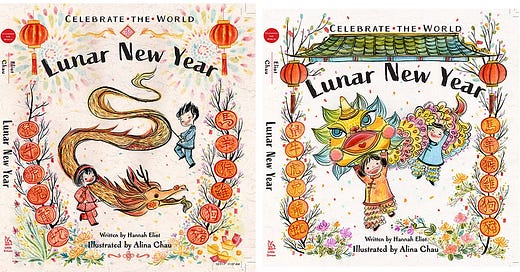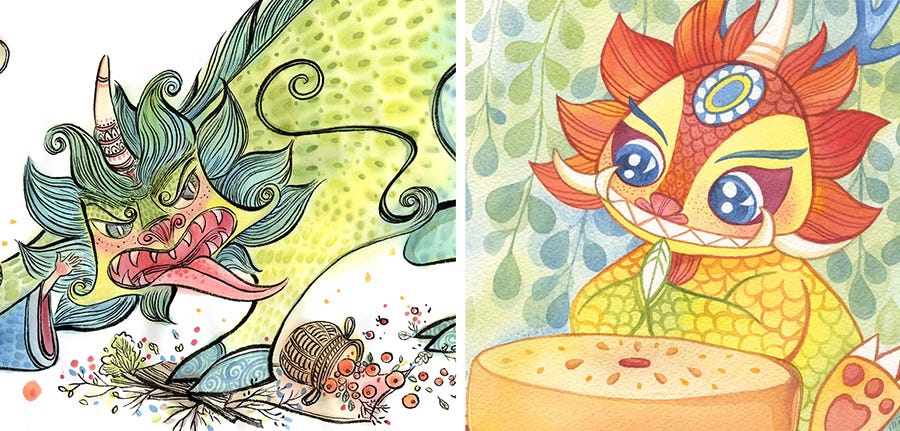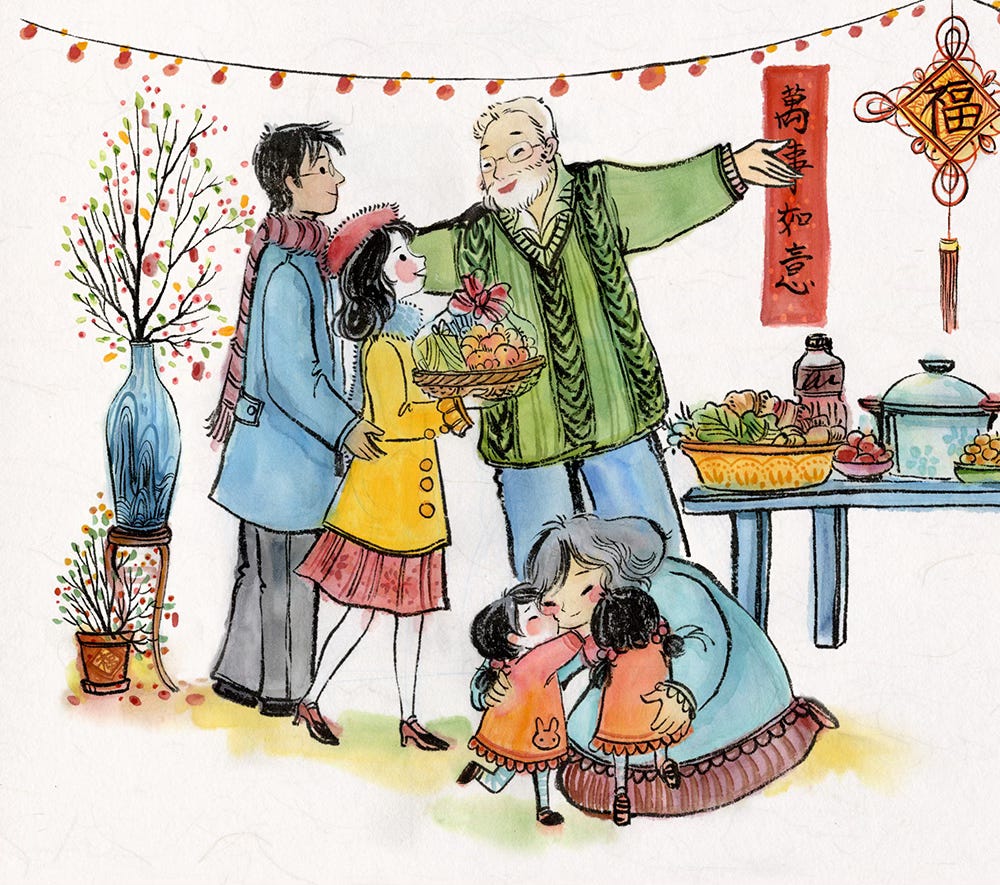Book illustration for the same theme in different genres - Part 2 Non-Fiction
And fun facts about the story evolution of a classic mythology.
Happy Lunar New Year!
To those who celebrate the Lunar New Year, I wish you and your loved ones a prosperous and joyful Year of the Dragon, with much great fortune to all who celebrate it!
And Happy Valentine’s Day!!
We can't celebrate the Year of the Dragon without a dragon! Here's a fun behind-the-scenes story. The original book cover had a dragon on it, but when we assembled all the final artwork, we realized that the color and layout of the cover weren't eye-catching enough. As a result, we decided to redesign the cover with the Lion Dance instead.
Even the monster must follow the rules when designing a cute non-fiction book!
One of the legends and myths about the Chinese Lunar New Year is the Nian Monster. The word "Nian" means "year" in Chinese, and the Nian Monster symbolizes unpleasant experiences, shadows, and negative energy from the past year. In mythology, the Nian Monster is portrayed as a monster that would terrorize the villages on the first day of the new year. However, the beast is afraid of loud noises and the color red. So, on the first day of the new year, the villagers hang red decorations around their houses, dress in red, light firecrackers, and play loud music to fend off the Nian Monster and welcome the new year. Celebrating the new year with red, music, and firecrackers symbolizes leaving behind anything unpleasant in the past year and welcoming the new year with a fresh start!
Lunar New Year and The Nian Monster both tell the same story of the Nian Monster, but the same story is told from different perspectives. Lunar New Year uses the story to explain the origin of the festival and its celebratory customs. In contrast, The Nian Monster retells the mythology with contemporary humor.
Due to differing narrative intentions, the illustration design must also approach the subject differently.
When it comes to non-fiction, we have to stick to the image of the creature from its respective mythology. But when it comes to fiction, we can be creative with the design, giving the monster unique personalities and cute expressions and letting our imaginations run wild.
The Nian Monster mythology, commonly known today, was written by a Chinese novelist in 1933. However, its inspiration dates back to a novel written during the Southern and Northern Dynasties around 420-589 AD. According to the legend, a monster called Shān sāo, with the face of a monkey and one leg, used to give people the flu. But this creature was afraid of the sound of bamboo burning in fire. So, villagers would use the loud sound of burning bamboo to fend off the monster.
Burning bamboo in the fire could be considered an early version of modern-day firecrackers.
One of the reasons I enjoy creating books is that the process teaches you just as much as reading them.
How do you greet someone in Chinese during the Lunar New Year?
Chinese is a complex language with over a hundred dialects. However, Mandarin is the official universal Chinese language that Chinese people use to communicate, regardless of their regional dialects. So, below are greetings in Mandarine.
Happy New Year - 新年快乐 (Pronounce: Xīnnián kuàilè)
Wish you happy and prosperous - 恭喜發財 (Pronounce: Gōngxǐ fācái)
May you possess the spirit of the dragon and the horse - 龙马精神 (Pronounce: Lóngmǎ jīngshén)
Would you like to read more about the Lunar New?
Check out the Asian Stories Library’s Ultimate Collection: 40 + Lunar New Year Books.












